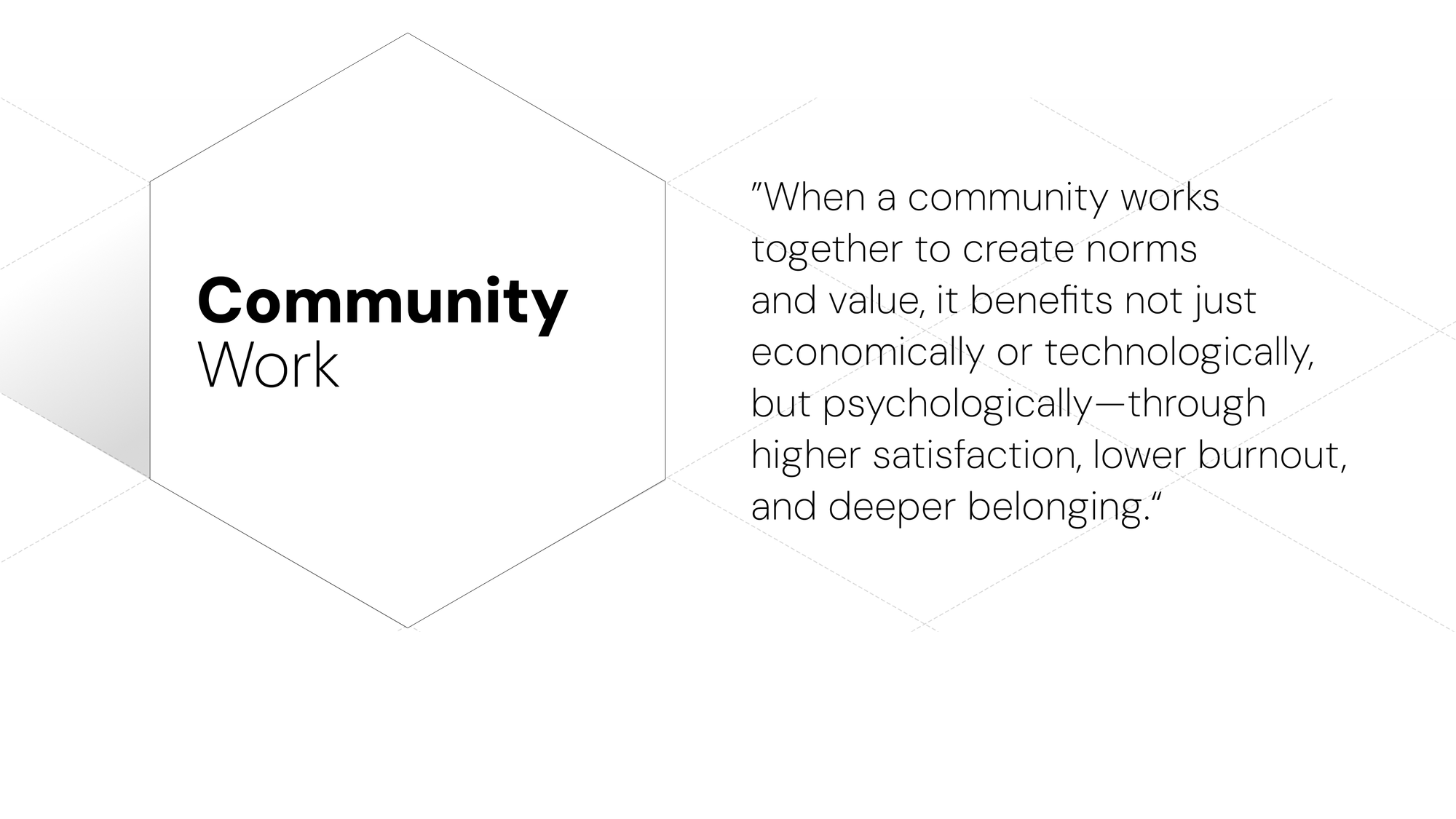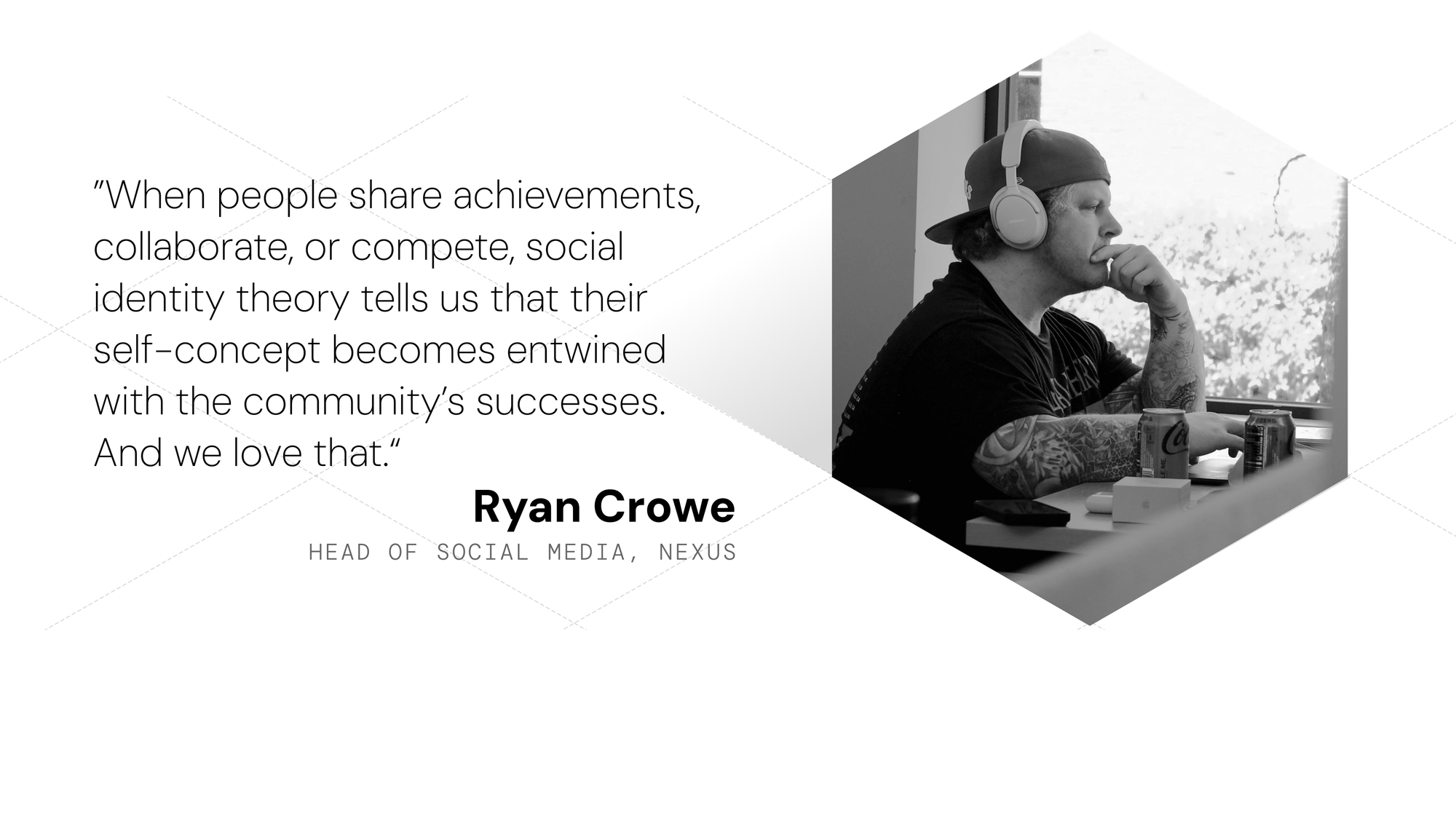Nexus Community Report: AMAs, dApps, and Creator-Driven Culture
As we welcome December, the Nexus ecosystem continues accelerating across protocol development, global community engagement, and creator-driven culture. This week

"How do you beat a neon sign? How about a handshake. Seems old-fashioned, but that’s how I think about standing out in web3 social spaces." - Ryan Crowe
At Nexus, community isn’t an audience — it’s an engine. The ideas, energy, and feedback loops from the people who engage with our work actively shape how we build and communicate.
Nowhere is that more visible than in our social channels, where campaigns inform, resonate, spark dialogue, and travel fast. In this spotlight, we talk with Ryan Crowe, Head of Social, about how Nexus designs for connection, why psychology beats hype, and how every interaction is an opportunity to return value to the community.
Your community is a living breathing signal, revealing barriers and opportunities for collective participation.
From a social psychology standpoint, group behaviors and attitudes guide the direction of our projects as much as any initial plan. We recently minted our first NFTs for our Node Runners campaign, and honestly, we missed at first.
We'd launched NFTs on Ethereum which has high gas fees that we passed onto the user. Oops, we woke up and realized we'd accidentally created a class system. The community let us know. That error highlighted the psychological impact of exclusion — how high gas fees unintentionally fostered feelings of injustice and frustration.
In response, I adapted not just the technology (moved NFTs to a cheaper mint environment) but the social narrative, we let the community know we heard them, told them about the new much cheaper gas fees, and launched a surprise NFT drop as a thank you.
Inclusive environments amplify positive social proof and increase the likelihood of word-of-mouth advocacy which is that delicious and oft sought out golden fleece of marketing, strengthening both loyalty and advocacy through a sense of shared ownership and having skin in the game.

Authentic engagement depends on facilitating social identity and group cohesion. The most powerful driver of participation stems from social psychological principles — specifically the need for connection and community validation. You want to not only fit in, but also be acknowledged, right? This is true in our everyday lives, and all marketing from Coca-Cola to organized religion is built upon that premise.
In projects like Camp Nexus, I intentionally design programs where individuals feel seen, valued, and capable of contributing to a collective purpose. When people share achievements, collaborate, or compete, social identity theory tells us that their self-concept becomes entwined with the community’s successes. And we love that.
Engagement then carries intrinsic value; metrics become indicators of deeper psychological involvement, not endpoints in themselves.
Simply put, every campaign we design begins with an understanding of motivation and attention. We’re not reinventing the wheel or anything, these are core principles in social and consumer psychology.
I am deeply aware of the mechanisms that drive individuals to engage, share, or act in digital spaces, especially social spaces. People are looking for things that align with their intrinsic goals or even values and desires, whether that’s learning, entertainment, recognition, or social belonging. My approach emphasizes the relevance and utility of each touchpoint; I start from the end goal of the user and work backwards to ensure interactions with Nexus give something back to the individual, facilitating agency and a sense of personal reward. I’m optimizing for the intersection of good vibes and manifest results, you might say.
By mapping my creative decisions to a diverse range of psychological needs like curiosity, achievement, belonging, I am able to build campaigns that resonate in a space that is full of people using all kinds of tactics to get someone’s attention.

Advocacy grows when expectations are met and agency is respected.
Consumer psychology teaches that perceived value, control, and trust drive action far more than persistent persuasion. I’m deliberate about communicating the purpose and tangible benefits of each initiative. Here’s what we’re trying to do, here’s what you get out of it. It’s that simple. Any notions of overcomplicating that are simply self-congratulatory, in my opinion. Hot takes over here.
Conversion occurs not because people are coerced, but because their experience offers immediate, clear usefulness and value. Conversion occurs when the experience aligns with their own motivations.
Consistent execution, especially high quality execution, results in people who actually show up vs. people who just say nice things, which is an important distinction theoretically and practically.
As a web3 marketer, it behooves me to align myself with the fundamental value of a web3 future. Decentralization. To that end, I have to believe that the most effective social systems decentralize control, support autonomy, empower the collective to self-govern, and share meaning.
Personal independence, autonomy, and contribution incubate and encourage well-being and sustained engagement. Most web2 platforms undermine these needs by gatekeeping ownership and manipulating influence. The implied promise of a web3 ecosystem offers a chance to realign social spaces with human capacities for self-determination and mutual accountability.
When a community works together to create norms and value, it benefits not just economically or technologically, but psychologically — through higher satisfaction, lower burnout, and deeper belonging. Again, this is not new to social engagement. We just apply it to our campaigns and marketing.
For me, this decentralization represents an ethical commitment to empowering people and honoring their role as active participants in shaping their social world. I'm more interested in building tools for people who want agency, not just an audience.